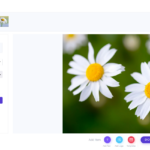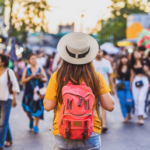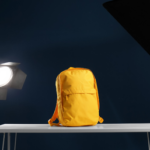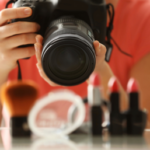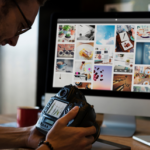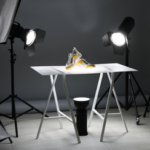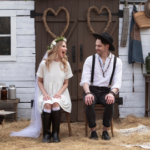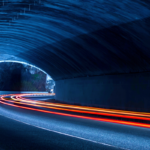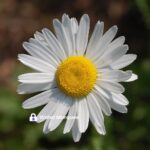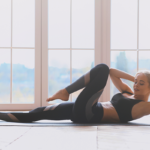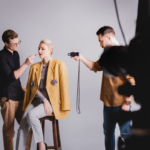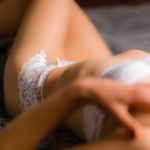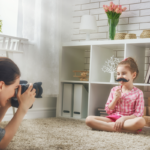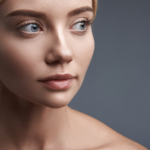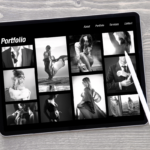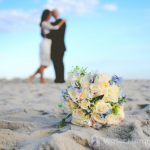What is aspect ratio in photography?
The aspect ratio is the shape of an image that is created by dividing it into a certain number of equal parts. It can be difficult to decide which aspect ratio to use for your photography, as there are many different options with their own strengths and weaknesses.
This article discusses some popular aspect ratios in photography, such as 4:5 or 3:2, and what they are best suited for. Read on to see how you can make better decisions about your photographs based on the type of shoot!
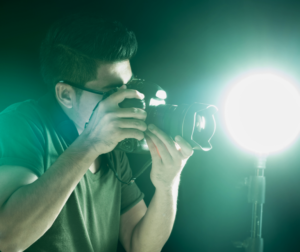
Why Should We Care about Aspect Ratio?
Most cameras have their own native sensor sizes. This means that they only produce photographs that are made up of one particular aspect ratio (regardless of how many smaller photos you stitch together). For example, the 16x24mm size was popularised by digital compact cameras. It was also used by DSLR’s for a while before full-frame sensors became popular. A photograph that was taken with a camera that uses 16x24mm sensors will always be square and 4:5.
This may not seem like a big deal, as it doesn’t stop you from cropping your photographs when they aren’t the correct shape. However, if you are producing stock photography or presenting them on certain websites (such as Behance), then having the wrong aspect ratio can be detrimental for business.
The Most Popular Aspect Ratios for Photographers
The two most important aspect ratios for a photographer are 3:2 and 4:5. Both of these have been used widely at different times in history. They work well with any camera sensor size and allow you to produce stock photos that will be more likely to be purchased by customers.
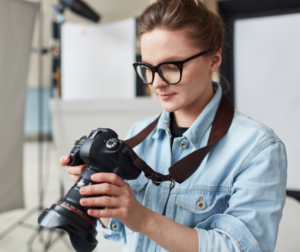
A popular way of producing these photographs is to create panorama shots; this involves stitching multiple images together after they have been taken so that the final image has the correct aspect ratio for your target market. By using this method, you can shoot a super high-resolution panorama that would not be possible with a single image.
The main thing to consider when you create panorama images is how big they are going to be when printed. Don’t forget about this! An enormous, high-resolution panorama may look great on your computer screen, but it will print as an enormous and unprofessional-looking blur if you don’t keep the target size in mind during the shoot.
How to Calculate the Aspect Ratio of Your Photo
If you’re not sure what aspect ratio your shot will have, the easiest way to find out is by using a simple mental calculation. If you already know that the shape of your photograph is 3:2 (this used to be very common), then it’s easy!
3 x 2 = 6: Find the square root of both sides and multiply them together. This will give you the proportion between width and height. i.e., in this example, it would be 1/6 or 16%. You can use a calculator for complicated calculations like this one!
If you have a new digital camera with a full-frame sensor such as a Nikon D800, there are actually two different dimensions that fit inside the same sensor size because they are slightly different aspect ratios.
1.264 x 1 = 1:1243: Find the square root of both sides and multiply them together; you should get 1/4 or 25%. This is your new, smaller photo’s ratio, but it will still be 4×6 inches big. It is useful to know that these two different sensor sizes have the same area so that you can shoot panoramas without introducing camera shake from moving between frames.
Common Uses for Each Type of Aspect Ratio, and How It Will Affect Your Photos
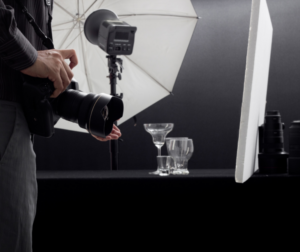
4:5 – square: This is the standard size for photographs taken with a compact digital camera or point-and-shoot. It results in a square picture that is great for online use. A ratio of 4:5 will crop perfectly when put next to a 3:2 aspect photo; this makes it a popular choice for stock photography.
3:2 (or 6:6) – portrait: The most popular photograph sizes are often determined by the user’s preferred sensor size, and DSLR users were happy with this ratio until full-frame sensors became widely used in 2009.
However, many cameras still offer alternative ratios on their screen so you can choose what best suits you without actually changing your camera settings. These options include 6:6 and 4:5. The square ratio on a digital camera is unusual because the sensor is rectangular, usually resulting in photos that are not the correct shape when printed or viewed on-screen.
3:2 – portrait: There are many use cases for this ratio other than portraits; it is used by professional photographers all over the world. These days image editing software has made it very easy to crop large images into portrait shapes so you might not even need to use 3:2 as a standard aspect ratio!
However, if you plan to print your photographs and they will be cropped by a printer (rather than using photo editing software), then getting them right at the source is best for professional-looking results. If you do want to edit your images later though, don’t forget that they will need to be at least twice as wide as they are tall in order to print correctly.
3:1: panorama This is a common aspect ratio for panoramas; it is used by photographers who are using special software (such as Photoshop or the free/paid Autopano Giga software) to create them from multiple images. It also requires you to shoot your photos with this precise aspect ratio in mind.
If you would like to make a standard-sized, postcard-sized photo instead of printing a panorama, try cropping the image into an 18×24 inch photograph after you have taken it. Your camera may not offer this but it is possible!
Tips on Choosing the Right Camera for You Based on What Kind of Photography You Want to Do with It
There are many different kinds of photography that use standard aspect ratios, from landscapes to portraits and even panoramas. However, you will probably want a camera with a good lens range as well as manual settings so that you can learn to take better photos. It is also very important to choose the right sensor size for your needs if you are buying a DSLR or other advanced camera.
4:3 – landscape: This ratio has been standard for decades in order to provide high-quality images printed onto standard-sized paper/film. The most popular digital crop DSLRs currently on the market have sensors that produce 4:3 images (eg. 80D, 7D, 60D, etc.) because these cameras were designed for amateur photographers who print their own photos. 4:3 is also very popular for printed portraits.
1:1 – square: This is a good ratio if you want your images to be displayed on websites or other media where they can be displayed in their full size without being zoomed out. Photos that are 1:1 in aspect ratio will take up the whole screen when viewed online, and may look distorted if made larger than this. If you want very small prints though, then having no extra space around your subject’s image can make them look interesting!
4:5: panorama – Since most cameras don’t offer a setting for an aspect ratio of 4:5 it isn’t common. However, this aspect ratio is very popular for printing panoramic photos and some compact cameras can do it automatically.
4:6: panorama – This one is mostly seen in portrait mode on digital SLRs since they produce images that are the correct shape for printing as standard-sized postcards without needing to crop them afterward. It’s also a favorite of amateur photographers who like to take landscape photos with their DSLRs because you don’t need to adjust your image size and crop afterward if you use the 4:3 or 3:2 aspect ratios when shooting the photo!
16:9 video format (eg 720p) – Since most TVs have screens with this same aspect ratio, displaying videos at 16:9 makes them look wide when viewed on a television. If you want your videos to be letterboxed (with black bars at top and bottom) then you can shoot videos with this format (eg. 720p) but if you prefer to have no borders around the screen then movies should be filmed in 1080p, which is 16:9 but has twice as many pixels.
1:2 – portrait – Having more height than width gives your photos a slightly different feeling than 4:3 or 3:2 and they are becoming increasingly popular among pro photographers for portraits. 1: 2 images may crop poorly if printed large because there will be slightly less height than width left for cropping afterward.
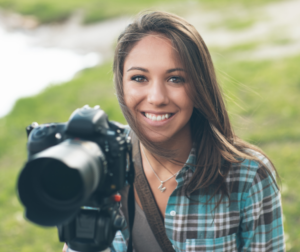
Conclusion
So, now that you’ve read this blog post and know what aspect ratios are and how they can be applied to your photography, we hope you have a better understanding of the types of cameras available on the market. If at any point in your research process you need help deciding which type is best for you or need more information on a certain product’s capabilities, please don’t hesitate to reach out. Our team would love to answer all of your questions as well as provide our professional opinion for free!




